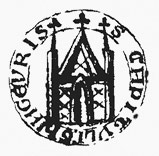テ枴ngeyraklaustur on:
[Wikipedia]
[Google]
[Amazon]
 テ枴ngeyraklaustur was a monastery of the
テ枴ngeyraklaustur was a monastery of the
"Um klaustrin テ。 Islandi. テ枴ngeyraklaustur"
i ''Tテュmarit hins テュslenzka bテウkmentafテゥlags'', 8, 1887. {{DEFAULTSORT:テ枴ngeyraklaustur Christian monasteries established in the 1130s 1133 establishments in Europe 12th-century establishments in Iceland Monasteries dissolved under the Icelandic Reformation Benedictine monasteries in Iceland Austur-Hテコnavatnssテスsla
 テ枴ngeyraklaustur was a monastery of the
テ枴ngeyraklaustur was a monastery of the Order of Saint Benedict
The Benedictines, officially the Order of Saint Benedict (, abbreviated as O.S.B. or OSB), are a mainly contemplative monastic order of the Catholic Church for men and for women who follow the Rule of Saint Benedict. Initiated in 529, th ...
located in テ枴ngeyrar on Iceland from 1133 until 1551. It was the first monastery in Iceland and probably the last to be closed by the Icelandic Reformation
The Icelandic Reformation () took place in the middle of the 16th century. Iceland was at this time a territory ruled by Denmark-Norway, and Lutheran religious reform was imposed on the Icelanders by King Christian III of Denmark. Resistance t ...
.
History
The monastery was founded by bishop Jテウn テ鉾mundsson in 1106, but it was not inaugurated until 1133 when its first abbot, Vilmundur テ榲ウrテウlfsson, was officially installed in office. Jテウn テ鉾mundsson assured the monastery an income from all farms between Hrテコtafjテカrテーur and Vatnsdalsテ。. テ枴ngeyraklaustur was one of the largest and richest monasteries in Iceland and a famous center of literature, culture and education, famed for its library. Arngrテュmr Brandsson, Karl Jテウnsson, Gunnlaugr Leifsson and Oddr Snorrason were all religious brothers at テ枴ngeyraklaustur and active as writers, and the writer Styrmer Kテ・resson is believed to have been educated there as well. A large number ofSagas of Icelanders
The sagas of Icelanders (, ), also known as family sagas, are a subgenre, or text group, of Icelandic Saga, sagas. They are prose narratives primarily based on historical events that mostly took place in Iceland in the ninth, tenth, and earl ...
were either produced or copied at the monastery, and the famous '' Bandamanna saga'', '' Grettis saga'', '' Hallfreテーar saga'', '' Heiテーarvテュga saga'', '' Kormテ。ks saga'', and '' Vatnsdテヲla saga'' are all likely to have been produced there.
In 1402 the monastery was dissolved after bubonic plague
Bubonic plague is one of three types of Plague (disease), plague caused by the Bacteria, bacterium ''Yersinia pestis''. One to seven days after exposure to the bacteria, flu-like symptoms develop. These symptoms include fever, headaches, and ...
claimed the lives of all but one brother. It was reestablished in 1424 by テ《bjテカrn Vigfテコsson, who served as abbot.
The monastery may have survived longer than other monastic institutes in Iceland. It was officially closed in 1551 during the Icelandic Reformation
The Icelandic Reformation () took place in the middle of the 16th century. Iceland was at this time a territory ruled by Denmark-Norway, and Lutheran religious reform was imposed on the Icelanders by King Christian III of Denmark. Resistance t ...
when the last abbot, Helgi Hテカskuldsson, was formally declared deposed, the monastery was banned from accepting novices, and its assets declared confiscated. The former monks were however allowed to remain for life if they wished, and it is therefore not known when it actually dissolved.
References
*Janus Jテウnsson"Um klaustrin テ。 Islandi. テ枴ngeyraklaustur"
i ''Tテュmarit hins テュslenzka bテウkmentafテゥlags'', 8, 1887. {{DEFAULTSORT:テ枴ngeyraklaustur Christian monasteries established in the 1130s 1133 establishments in Europe 12th-century establishments in Iceland Monasteries dissolved under the Icelandic Reformation Benedictine monasteries in Iceland Austur-Hテコnavatnssテスsla